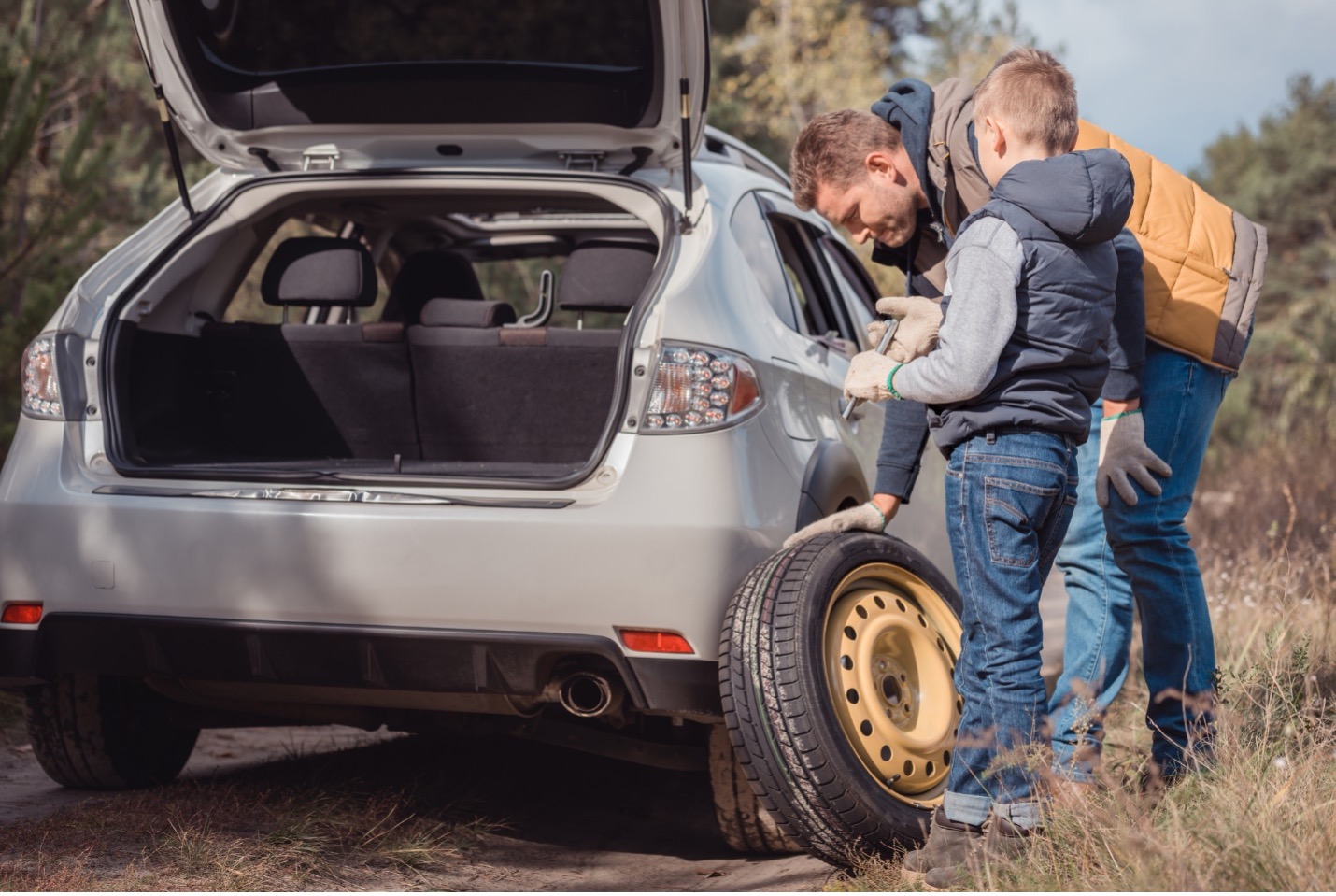According to the United States Department of Transportation, the average driver in the United States spends 55 minutes per day behind the wheel and drives 29 miles daily. A statistical analysis conducted by Agero, a market leader in digital driver assistance services, states that 69 million breakdowns occur in the United States annually and that one in every three drivers can expect to face a breakdown in a year. Roadside breakdowns can create hazardous situations for everyone involved. A complete emergency car kit can, therefore, help to protect you and your loved ones if you ever face an unexpected situation on the road. If you have been injured in a roadside breakdown or emergency, consider contacting the knowledgeable Georgia personal injury lawyers from The Balams Firm by calling (404) 445-2005 to schedule a free consultation.
The Most Common Roadside Emergencies
No matter how careful you are about regularly servicing your car and checking your vehicle for safety and drivability, vehicle breakdowns and roadside emergencies are still possible. Some of the most common causes of roadside breakdowns include:
- Dead batteries
- Flat tires
- Overheated engines
Dead Batteries
A dead or drained battery is the most common reason for roadside emergency calls. Although car batteries do not require maintenance, they do have a shelf life. Over time, a car battery drains and eventually becomes too weak to start a car on its own. A vehicle’s engine charges the car battery when it is running. Therefore, leaving a vehicle’s lights or radio on when the engine is off can cause power to drain out of the battery. Extreme temperatures can also adversely affect the efficiency of a car battery.
Flat Tires
A tire puncture or shredded tire can be caused by hazards on the road, such as potholes, uneven surfaces, or objects like nails and broken glass. Tires that are not maintained properly or are worn out are also more likely to become flat. Simply driving with low tire pressure can cause a blowout.
Overheated Engines
An overheated engine is recognizable either when the vehicle’s temperature gauge is red or when steam escapes the hood of the car. There are many reasons why a vehicle’s engine may overheat, such as a leak or other issue with the radiator. Driving a vehicle with an overheated engine is unsafe. Therefore, vehicles with this issue usually must be towed to a mechanic or car dealership for servicing.
Roadside breakdowns can be dangerous situations. If you have questions about vehicle safety or have been injured in a roadside emergency, a dedicated and experienced Georgia personal injury attorney from The Balams Firm may be able to help you understand your legal and financial rights.
Items To Include in an Emergency Car Kit
An emergency car kit helps a driver to be prepared for unexpected roadside breakdowns. A complete kit includes all the essential items that may be needed in the event of a roadside breakdown or emergency. These items can keep a driver and his or her passengers safe while waiting for help to arrive. In some cases, they may even allow a driver to make minor repairs and continue driving to get to a safe place and have the car repaired by a professional.
According to the National Safety Council, drivers should keep an emergency car kit in the vehicle at all times. While some people like to put together an emergency car kit themselves, others prefer to buy an assembled kit with everything they need. Either way, it is essential for a driver to first evaluate specific needs based on the types of roads usually traveled and the potential weather conditions to determine the exact items that need to be included in the kit.
Most kits should include the following items:
- An inflated spare tire for use in the event of a flat or punctured tire
- A wheel wrench and tripod jack for changing a tire
- A tire puncture repair kit or tire sealant for repairing punctures
- A portable jump-start battery or jumper cables to jump-start a car in the event of a dead battery
- Fire extinguisher in case the vehicle catches fire
- A tow strap for getting a car out of snow, mud, or a ditch
- A flashlight for making repairs in the dark, along with extra batteries
- A reflective safety vest, reflective triangles, and light sticks to increase the visibility of the vehicle and its stranded driver and passengers
- Rain jackets, warm clothes, and blankets to keep the driver and passengers warm and dry in cold or wet weather
- A shovel and snow brush for handling snow and other hazardous weather conditions
- Nonperishable food and water bottles
- First aid kit in case of minor injuries
- Portable cell phone charger
How To Check a Car for Drivability
While an emergency car kit is essential for dealing with unexpected situations, checking the car for safety and drivability is an important preventative measure. Before setting out on a long-distance drive, a driver should check for common issues in the following:
- Visibility
- Battery
- Tires
- Engine
Visibility
Visibility is one of the most critical safety issues to check before setting out on a trip. Check that all lights are working correctly; clean the windshield, windows, and mirrors; fill up the windshield washer fluid; and make sure that the wiper blades are working well.
Battery
A simple inspection of the car’s battery is always a good idea. Check that all the connectors are secured tightly on the battery. Use a cloth to clean away any corrosion that has built up. If the battery is more than two years old or has had issues, visit a mechanic or auto parts store to have it tested.
Tires
Begin by checking the tire pressure with a tire pressure gauge. Even if the tires do not look flat, they may have low pressure. The correct tire pressure measurement for the vehicle can be found inside the driver’s side door or in the car’s manual. Be sure to check all four tires and the spare tire for the proper pressure.
Another important tire inspection involves looking for cracks or bulges. The “penny test” can be used to check tread depth by inserting a penny into the tread of each tire. If the top of Lincoln’s head is visible during this test, the driver should make plans to replace those tires.
Engine
Checking and topping off fluid levels is a great way to avoid seeing the check engine light on the dashboard. Oil, coolant, engine fluid levels, and the vehicle’s air filter should all be checked regularly. Getting regular oil changes and manufacturer-recommended services at a local mechanic or dealership is another way to reduce the chances of dealing with engine issues.
Have You Been Injured in a Roadside Emergency?
Roadside breakdowns and emergencies can create dangerous situations for the driver and his or her passengers and loved ones. Having a complete emergency car kit can help you to be prepared and may even save your life. If you have been injured due to a roadside emergency or accident, consider speaking with an experienced Georgia personal injury attorney at The Balams Firm by calling (404) 445-2005 to schedule a free consultation.











